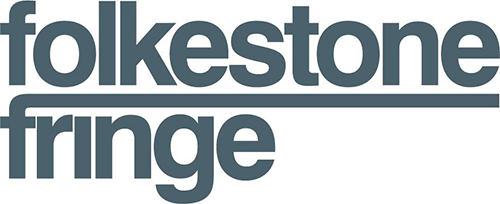Daniel Tollady // Urban Archive: Folkestone
// The Festival of Looking //
About the Artist:
"Concerned with the creation of a fictional spatiality, my practice uses generative drawing processes and intuitive structural compositions to describe a new spatial experience, one that manifests itself through analogue drawings and physical 1:1 structures. Exploring notions of becoming and assemblage, my practice is one that is in a constant state of flux. A drawing language and a series of spatial objects that reconfigure themselves each time they are used, never forming a final outcome, or, never reaching a conclusive state of being. Through this work, I have exhibited widely across the South East of England in both group and solo shows, and I've created installations for a number of events, including the Ramsgate Arts Festival, the Cheriton Light Festival and for the Folkestone Triennial Fringe. Alongside this independent process, I like to pursue collaborative projects that operate between architecture and fine art, as well as regularly teaching and facilitating workshops that push the boundaries of design-thinking.
As a champion of arts education, I am actively engaged in educational outreach and continue to facilitate workshops and events in schools and within the community. Currently I am an associate of Urban Room Folkestone, working with them to programme their ongoing engagement with Folkestone's urban environment and alongside this, I am a Sessional Lecturer of Design for Stage01 Architecture and Stage01 Interior Architecture & Design at the Canterbury School of Architecture, UCA, as well as the National Saturday Club Tutor at UCA Rochester."
Project Summary:
As part of his response to the Magic Carpets brief, Dan Tollady presented his project Urban Archive: Folkestone.
The words below are extracted from his blog >>
"There is no doubt in my mind that Folkestone is home to a rich community of people built upon a foundation of differences, each member bringing with them their own collections of stories and histories to share with those around them, with anybody willing to listen. Yet, through closer inspection, you come to realise that this rich Folkestone community is actually built from a network of smaller, more intimate communities of people."
"Despite the rich variety of backgrounds that might form these communities, they all have one thing in common: they are all happily co-existing in Folkestone. In fact, they ARE Folkestone. Add into the mix the different environmental qualities, the urban environment, the sea on one side and the Kent Downs on the other, the flourishing arts communities and many cultural activities, there are an infinite number of ingredients mixed together to form Folkestone. Although there is a close proximity to all of this richness, it is hard to pinpoint the overlaps and the grey areas where different elements blend together or transition into another. They do exist, for example, in democratic spaces such as supermarkets and restaurants, but do they exist on a more personal, familiar level? I’m sure that they do, but how do we make this more prominent? How do we unite everybody into one Folkestone community? Urban Archive: Folkestone hopes to do just that, to unite as many people as possible through the sharing of stories and unique souvenirs specific to the town of Folkestone.
The creation of this archive is entirely reliant on the participation of Folkestone’s residents and the dialogue that the archivist must establish with them. First, the archivist must identify a unique souvenir of local importance, an object that tells a story and represents a moment in Folkestone’s history, an object that becomes a totem of communal exchange. Once identified, the archivist must become the conduit between the archive and the participant, on one hand, the receiver of stories and on the other hand, a giver of souvenirs. The outcome of this exchange is an archive that hopes to become an analytical cross-section representative of the town and its inhabitants, a database of narratives that form a bridge of familiarity between the different people that form the town of Folkestone."
During Tollady's residency in Prague last year, he created a body of work called Urban Archive, and through that, explored the relationship between tourism and the local residents in Central Prague.
Visit Dan's: Website >>
Workshops:
Sat 22 & Sun 23 Jun 2019 Open-Studios // 14:00 - 17:00 // Urban Room Folkestone, Tram Road Car-Park
"As part of the Magic Carpets Open-Studios, Tollady invites you to bring along a small object and some personal stories in exchange for a souvenir of ballast and an instant portrait. This ballast, transported from Wales in the 1970’s has been extracted from the disused Harbour Branch Railway Line, and has been cleaned of 40 years worth of dirt. There will be 100 exchanges in total, collected into a new archive, as part of the @cq_folkestone, Open Quarter."
Fri 28 & Sat 29 & Sun Jun 2019 Presentation of the Archive // 14:00 - 17:00 // Urban Room Folkestone, Tram Road Car-Park
Across specific days, members of the public could come and be part of Folkestone’s Urban Archive; by bringing a small object and some personal stories in exchange for a souvenir of ballast and their own instant polaroid portrait. This ballast, transported from Wales in the 1970’s, was extracted from the disused Harbour branch railway line, and was cleaned of 40 years worth of dirt by Tollady himself. There were 100 exchanges in total to make up this archive; which was presented in the exhibition space of Urban Room Folkestone within the closing festival weekend.
This was a community project, commenting on the network of smaller, more intimate communities of people surrounding the research & materials of Tram Road. Adding to the mix the different environmental qualities- the urban environment, the sea on one side & the Kent downs on the other side of the track.

